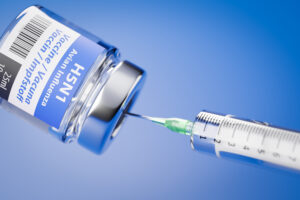Question: It seems that everyone is talking about the dangers of red dye in food. Do I need to stop eating anything red?
The short answer: No!
The explanation: The current headlines are arising primarily from a consumer group petitioning FDA to ban red dye no. 3 in food. There are currently nine synthetic color additives that have been approved by FDA for use in foods and beverages. Along with a “Citrus Red #2” approved only to color orange peels, the list includes two approved reds:
| Color | Approved for | Acceptable Daily Intake (ADI) |
| FD&C Red No. 3 (Erythrosine) | Confections, beverages, cereals, ice cream cones, frozen dairy desserts, popsicles, frostings & icings | 0.045 mg/pound body weight/day (0.01 mg/kg) |
| FD&C Red No. 40 (Allura Red) | Cereal, beverages, gelatins, puddings, dairy products, and confections | 3.2 mg/pound of body weight/day (7 mg/kg) |
Of the two, red dye 40 is one of the most commonly used of all food dyes, while red dye 3 is the second least commonly used. Both have been deemed safe for use in foods largely because the generally consumed daily intake of each is significantly lower than the amount deemed acceptable – the Acceptable Daily Intake (ADI). Additionally, all synthetic dyes are required to undergo batch certification, with FDA analyzing the chemical composition of a representative sample of each batch to ensure it meets the required identity and specifications before it can be used.
Red dye no. 3 (erythrosine) is the most controversial of the two, as high doses have been found to cause cancer in lab mice. However, as we have often stated, risk is a function of hazard and exposure. Thus, due to both the negligible amounts used in foods and its limited approved uses by both the FDA and European Food Safety Authority (EFSA), the exposure from foods is so low that FDA has stated that the “risk of getting cancer from Red No. 3 is no larger than 1 in 100,000 over a lifetime of consumption.” Additionally, the body does not metabolize erythrosine, and only about 1% of that which is consumed from a food is absorbed into the body.
Red dye 40 (Allura Red) has been approved by global authorities, with the US EPA determining it to be of low concern; EFSA approving its use in foods; and the Food and Agriculture Organization (FAO) and World Health Organization (WHO) agreeing that it does not present a health concern for persons of any age. These assessments are based on the ADI, which studies have shown to be much higher than general intake. For example, an NIH study showed that children ages 2–5 years had the highest average daily intake, but consumed only 0.0045 mg per pound/body weight – about a tenth of a percent of the acceptable level.
All this is not to say that there are no hazards or risks associated with synthetic dyes. But those advocating for a complete ban of dyes are considering only the possible risk, not the actual hazard that requires a determination of the exposure/intake level. As with all foods and ingredients, our best advice is: Everything in moderation taking into consideration your, and your family’s, particular health conditions.
animal feed





